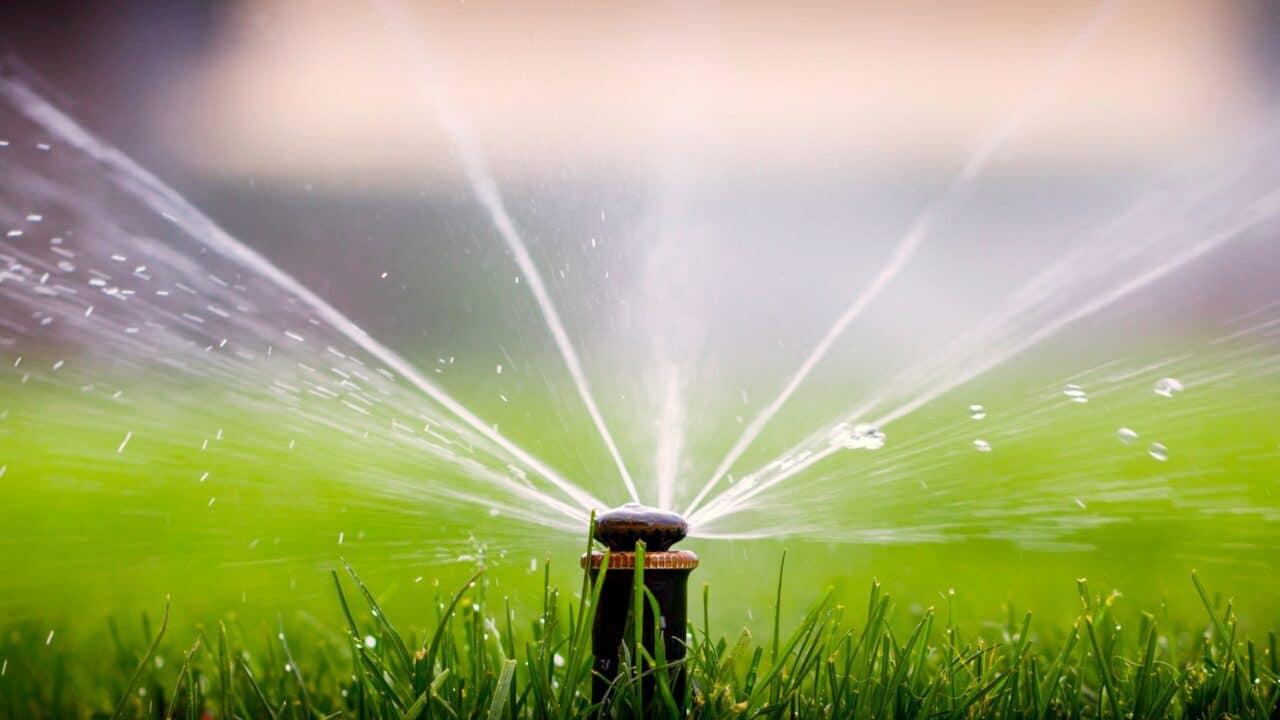Keeping your lawn green in July doesn’t mean running the sprinklers nonstop. Our approach focuses on deep, strategic watering, proper mowing height, and soil conditioning, ensuring your grass stays healthy without wasting a drop.
How We Keep Your Lawn Green in July Without Wasting Water
July brings high heat, long sunny days, and the kind of dry spells that can stress even the healthiest turf. As a professional lawn care provider, we know that watering smarter — not more — is the key to a green, resilient lawn.
Whether you’re mowing yourself or considering a maintenance plan, this guide walks you through exactly how we keep lawns thriving during the hottest stretch of the year. These methods reduce waste, improve lawn health, and lower water bills — even in drought-prone conditions.
💦 The Right Amount of Water — Not a Drop More
It’s a myth that you need to water your lawn every day in summer. In fact, daily watering creates shallow roots and weak grass.
Our Rule of Thumb:
We aim for 1 to 1.5 inches of water per week, spread across two or three sessions. This includes rainfall — so if it storms mid-week, we skip or adjust the next watering.
How We Measure Water Usage:
-
We use rain gauges or tuna can tests to track how much water a sprinkler system or hose delivers in 15-minute increments.
-
For clients with irrigation systems, we adjust timers based on local rainfall and conditions — not just preset schedules.
-
In drought conditions, we may dial watering back to 0.5 inch per week and shift focus to survival mode instead of growth.
DIY Tip:
Put a shallow container (like a tuna can) in your yard and run your sprinkler. Time how long it takes to fill to 1 inch — that’s how long you’ll need to run it per session.
Timing is Everything: When to Water
The best time to water your lawn is early morning, between 5 AM and 9 AM. This gives the grass time to absorb moisture before the sun evaporates it and reduces the risk of fungal disease.
We never recommend evening watering — moisture lingers overnight and can lead to lawn fungus or mildew issues.
Why Morning Watering Works:
-
Less evaporation = less waste
-
Grass dries before nightfall = healthier turf
-
Roots absorb more water efficiently
If your schedule doesn’t allow morning watering, late afternoon is a second-best option — just make sure the grass blades dry before dark.
Mowing Matters More Than You Think
Mowing isn’t just about appearances — it’s one of the most important levers we control to help your lawn stay green with less water.
Here’s what we do:
-
Raise mower blades in July: We cut grass at 3.5 to 4 inches to help shade the soil and retain moisture.
-
Sharpen mower blades weekly: Clean cuts reduce stress on the grass and prevent yellowing or tearing.
-
Follow the 1/3 Rule: We never cut more than one-third of the grass blade height in a single mow — doing so weakens roots and increases water demand.
DIY Tip:
If you’re mowing your own lawn, check your mower’s blade height setting. Taller grass shades the soil, conserves water, and grows deeper roots.
We Condition the Soil to Work With Nature
Good watering habits mean little if your soil can’t hold onto the moisture. That’s why we treat the soil as part of the system.
Our soil-boosting tactics include:
-
Core aeration (spring or fall) to break up compaction and allow water to soak in rather than run off.
-
Topdressing with compost or screened soil in problem areas to increase organic matter and water retention.
-
Slow-release nutrients, timed based on your lawn’s growth patterns, to avoid pushing too much growth during summer stress.
For clients in particularly sandy or clay-heavy areas, we may recommend tailored amendments or soil testing to create long-term improvement.
Mulch Clippings = Free Moisture Protection
Many DIY mowers bag their clippings — but we leave them on the lawn (unless we’re managing thatch issues). Grass clippings break down quickly and act like natural mulch, holding moisture and returning nutrients to the soil.
What we do:
-
Use mulching mower blades to finely chop clippings
-
Spread them evenly to avoid clumping
-
Remove only in cases where excess thatch is a concern
This simple step reduces evaporation and fertilizes the lawn — saving time, money, and water.
Smart Adjustments During Drought
In extreme heat or water-restricted areas, lawns may go dormant — and that’s okay. Grass naturally protects itself by slowing growth and turning slightly tan.
Here’s how we adapt without panicking:
-
Avoid mowing too short or too often
-
Water lightly every 2–3 weeks to keep the crown alive, even if the lawn looks brown
-
Skip fertilizing until cooler weather returns, since pushing new growth during heat waves stresses the grass
When conditions improve, we help revive the lawn with aeration, overseeding, and light compost topdressing.
Consistency Over Intensity
One of the biggest mistakes homeowners make is irregular care — watering heavily one week and ignoring it the next.
Our lawn care plans focus on consistency:
-
Scheduled mowing based on turf growth, not just a calendar
-
Watering schedules tailored to the property, not a cookie-cutter routine
-
Ongoing monitoring for stress, bare spots, weeds, and disease
This method keeps the lawn stable, strong, and better equipped to handle stress.
🌤️ FAQ: Water-Wise Lawn Care
Q: Can I just water daily for 10 minutes to save time?
A: No. Shallow watering trains grass to grow weak, shallow roots. Water less often but for longer — ideally twice a week for 30+ minutes.
Q: My grass looks brown — should I water more?
A: Not necessarily. Brown grass may be dormant, not dead. Check if it’s brittle (dead) or soft and tan (dormant). Adjust watering slowly and monitor.
Q: Is a sprinkler system better than a hose?
A: Not always. A sprinkler system is convenient but should be optimized for timing and coverage. Hose watering with a wand can be more precise for small lawns.
Q: Should I fertilize in July?
A: Only lightly, if at all. Too much fertilizer in heat can burn the lawn or force weak new growth. We often hold off until fall.
Q: Do lawn treatments work without watering?
A: Most treatments (like weed control or nutrients) need moisture to activate. Without water, even the best products won’t be effective.
Last Updated: 6/30/25

